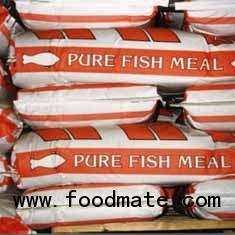 A new rule by China’s Ministry of Agriculture taking affect in January will require producers to clearly label fish feed ingredients. The new rule is part of an increasing awareness among regulators in China on traceability and quality in aquaculture feed inputs, according to Maggie Xu, representative in China for the International Fishmeal and Fish Oil Organization (IFFO).
A new rule by China’s Ministry of Agriculture taking affect in January will require producers to clearly label fish feed ingredients. The new rule is part of an increasing awareness among regulators in China on traceability and quality in aquaculture feed inputs, according to Maggie Xu, representative in China for the International Fishmeal and Fish Oil Organization (IFFO).The regulations are also meant to regulate usage of multiple species in fishmeal and oil product.
“A high percentage of bycatch may include shrimp and crabs as well as small fish. Hence a shrimp-fish mix is not regarded as premium quality. Fishmeal with a high concentration of bycatch poses a higher risk of diseases,” said Xu.
Another fish feed industry theme expected to accelerate in 2013 is the increased diversification of China’s fishmeal and fish oil import sources. Xu notes Peru is facing a massive 60 percent cut in its anchovy quota in the upcoming fishing season.
“We see a trend of diversification and in 2011 China imports from 21 countries, 2002 from 10 countries. We see the same for fish oil. Before 2009, 88 percent of supply was coming from South America but in 2011 only 40 percent of supply came from there. North America and Asia have become more important.”
Xu says demand for quality feed is set to rise as China’s aquaculture sector breeds more high-end species. “Our meetings with the China Fisheries Association told us that the industry in China is moving towards high value species. We do hope this means good news for our members.”
On average, around 1.5 million metric tons (MT) of fishmeal is consumed every year in China with nearly 1 million MT going to aquaculture. Over 1 million MT of that is imported and around 400,000 MT produced domestically. Figures from different sources however vary: the government reports 500,000 MT a year while some researchers put it at 200,000 MT. The IFFO goes with a 400,000 MT estimate. Explaining the discrepancy between figures, Xu said much depends on whether viscera or offal-based fishmeal is included. In recent years, trimmings and byproducts from China’s huge tilapia processing industry have become a source of inputs.
China’s 12th Five Year Plan suggests the aquaculture industry still has room for 5 percent to 7 percent growth from now untill 2015. Fishmeal use by omnivore fish like carp and tilapia remains very low compared to producers of carnivore species like grouper and shrimp. The inclusion rate for fishmeal in eel diets is as high as 60 percent.
Higher fishmeal and fish oil prices are also driving use of replacements, such as soybeans. Higher fishmeal prices mean that fish meal is less a commodity and more a strategic feed ingredient, fed only at the critical stages in the growing cycle or only to the high-value species.
“In aquaculture the feed formulation will be adjusted also. Soy meal is increasingly replacing fishmeal and soy or canola oil will continue to replace fish oil. It’s very dynamic.” Typically the ratio between fishmeal and soybean prices is an average three-to-one. But when the ratio goes above 4 to 1 the pressure to find replacement for fishmeal increases,” said Xu.
Xu expects the IFFO to be increasingly busy providing information and advice on China’s increasingly complex policy regulations for feed imports. In addition, explained Xu, China will continue to demand better traceability of feed and hence requires importers and overseas exporters to register on the website of the national quarantine and inspection body, the General Administration of Quality Supervision, Inspection and Quarantine (AQSIQ). A similar new rule requires imported feed to be packed in labeled sacks before it’s released from the port warehouse. Similarly, China is also examining a national standard for regulating dioxins in feed.
Vietnam is China’s top supplier of crude fish oil. However the Pangasius feedstock used in Vietnam is seen as of lower in vital components like Omega 3 compared to the anchovies-based supply from Peru. It’s hence mostly used for feed manufacture, whereas Peru supply is used for human use, such as Omega 3, as well as feed.
During the past 50 years global supply has remained stable at 5 million MT a year of fishmeal with fish oil at 1m ton. Several sharp falls have been attributable to damage done to South American supply by the El Nino causing changes in the central Pacific Ocean temperatures.
While other fish feed components such as algae are “technically feasible,” Xu believes, the production costs remain too high for mainstream use in China.
Chinese securities houses and stock analysts have pointed to a bright future for the local aquafeeds industry. One of them, TF Securities, notes that while China will rely ever more heavily on aquaculture due to water pollution and overfishing, the feed industry remains highly fragmented.
According to TF Securities, in 2010, the total output of farmed aquatic products was 38.29 million tons, which meant, theoretically, China’s aquatic feed demand should be around 34 million tons. However, in 2011 China’s total aquatic feed output was only 15.4 million MT and Haid sold 1.59 million MT. Therefore, in 2011, Haid only accounted for 10 percent of the current market or 4.7 percent of the potential market.


